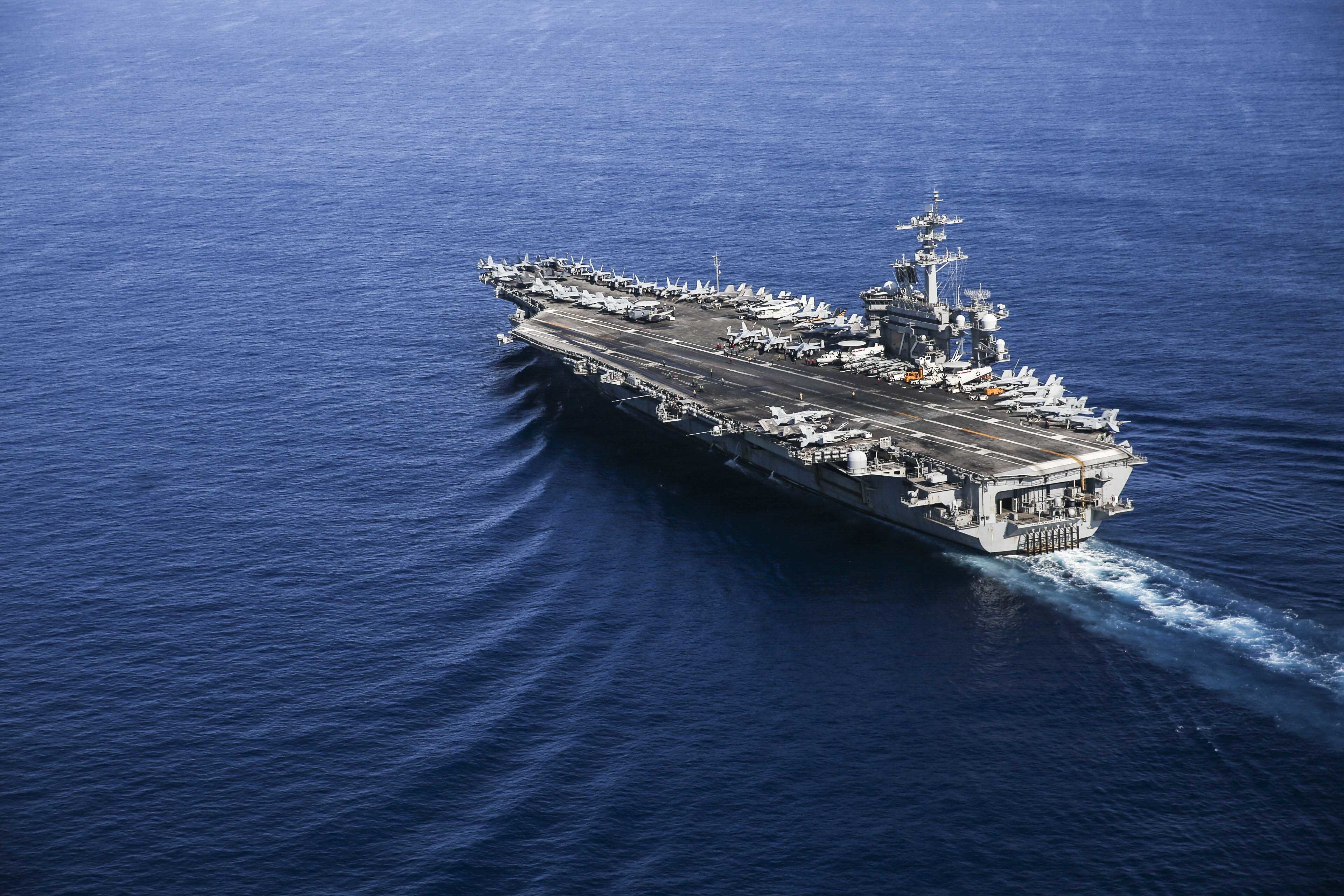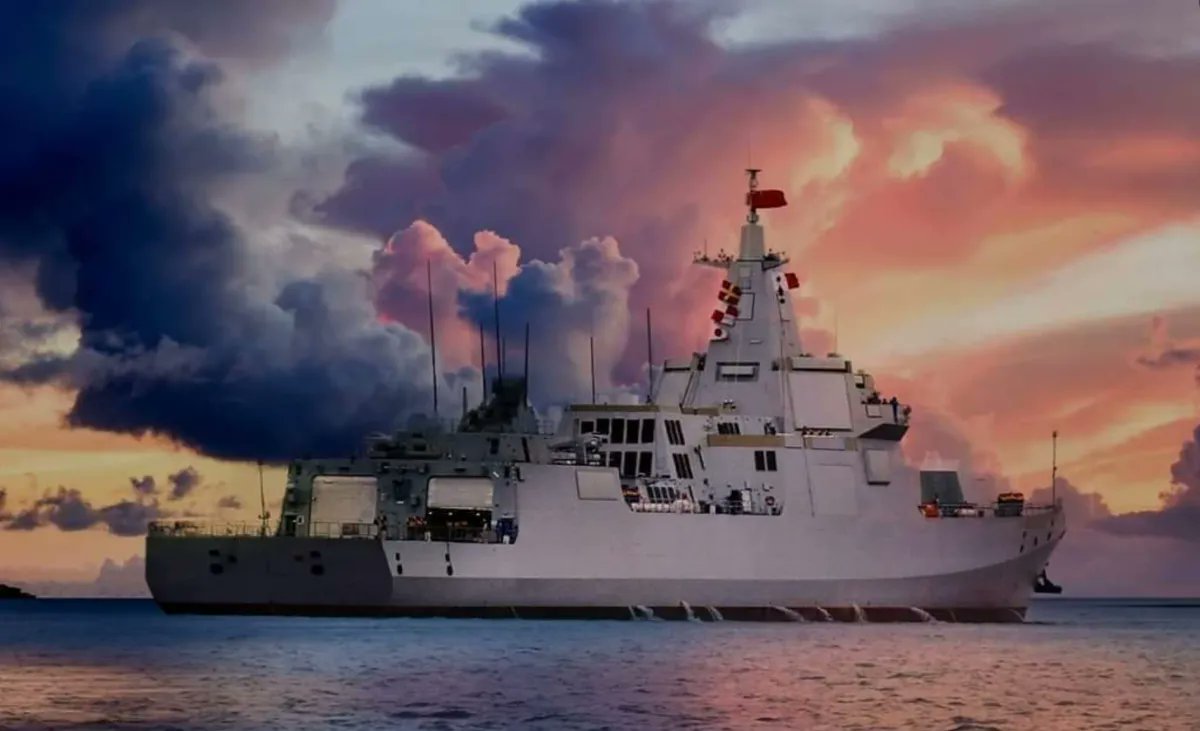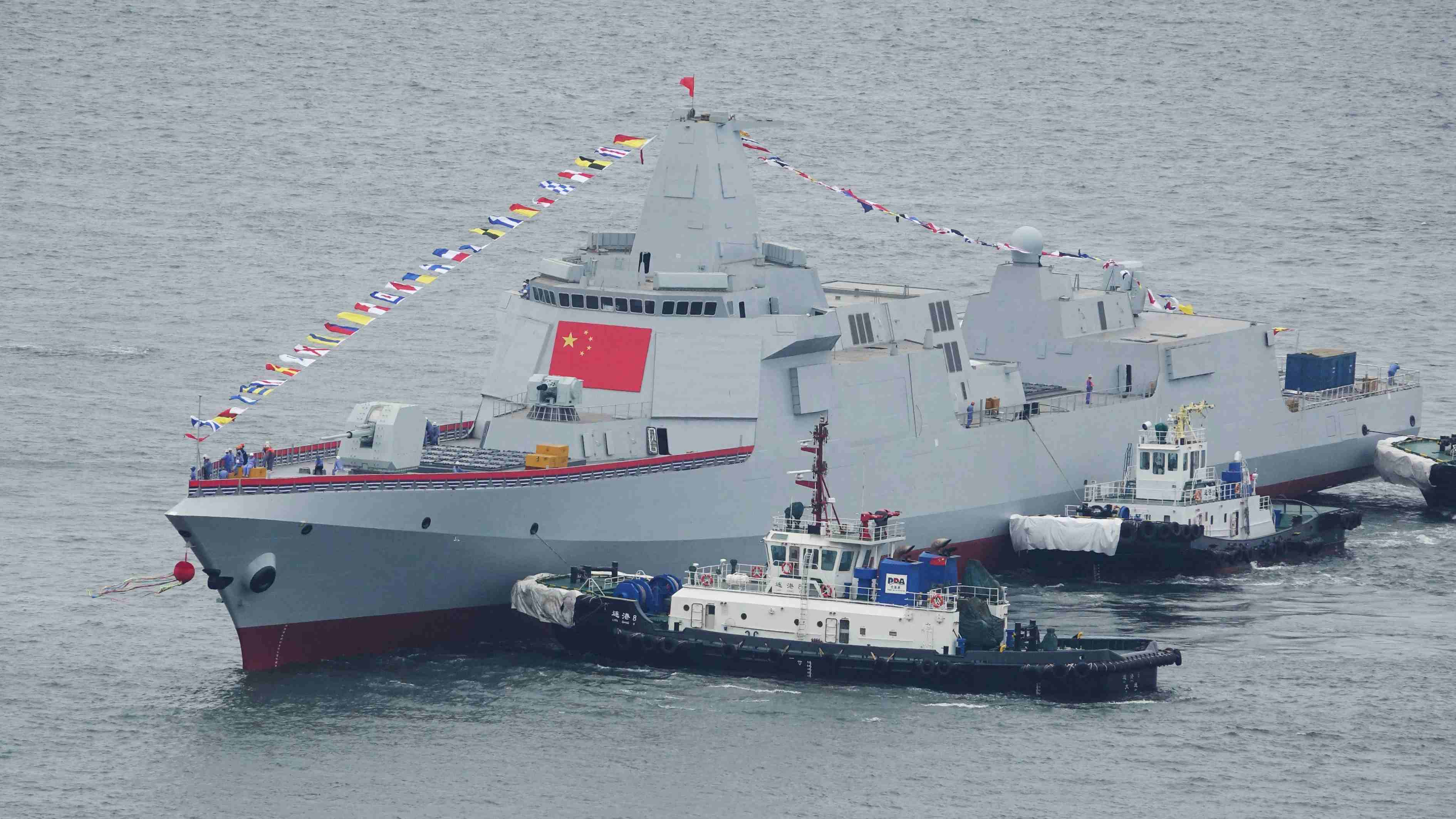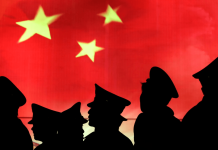The US is displaying its naval firepower in the Indo-Pacific waters at a time when the world’s attention is still focused on the war in Ukraine. In what could raise the temperatures in the region, China has also deployed its best destroyers in the region.
Four of China’s largest and most modern destroyers have been observed off the east coast of the country even as a US Navy carrier strike group is conducting military drills with Japan near the Korean peninsula.
The four ships were identified as Chinese Type 055 Renhai-class guided-missile destroyers in waters near Qingdao, the headquarters of the North Sea Fleet, by HI Sutton, an analyst at US Naval Defense Intelligence News. The images were posted by Chinese social media outlets including the Weibo account ‘Eagle Eye on Military Vision’.
In an unprecedented development for the region, the US and Japanese warships are conducting a joint naval exercise in waters between Japan and the Korean Peninsula first time in five years.
The drills, led by the USS Abraham Lincoln carrier strike group, are being seen as the show of their close military alliance amid growing speculation of North Korea’s missile test later this week, Japan Today reported.

These drills have been interpreted as an apparent attempt to dissuade North Korea’s provocations which are set to celebrate the ‘Day of the Sun’ or the birth anniversary of its founder Kim Il Sung on April 15.
The US anticipates that Pyongyang could conduct another provocative test to mark the day as it adopts a more belligerent approach with its nuclear program, amid the global preoccupation with Russia. However, China’s mobilization of its destroyers is intriguing given that the American actions were aimed at North Korea.
However, it is pertinent to mention that China is North Korea’s only friend in the region and its closest partner in the world that has consistently blocked United States’ resolutions against the country at the United Nations forum.
The Unusual Appearance Of Chinese Destroyers
The four Type 055 destroyers had been accompanying the country’s two aircraft carriers, the Liaoning and Shandong, as they returned to the Dalian shipyard in Liaoning for maintenance, according to Zhou Chenming of the Yuan Wang military science and technology think tank in Beijing, SCMP noted.
“There is not any formal military exercise for the four ships, because a formal naval flotilla should be composed of different types of warships,” Zhou said.
**UPDATE**
4 #Chinese Navy (PLAN) Type-055 Renhai Class cruisers out today. #OSINT pic.twitter.com/Vf7eHSFJFq
— H I Sutton (@CovertShores) April 11, 2022
Nanchang, Lhasa, Anshan, and Wuxi are the four Type 055 destroyers that have been commissioned in the last two years. China has produced a total of eight Type 055 destroyers, six of which have already been deployed, and the second type Lhasa is now combat-ready, as previously reported by the EurAsian Times.

Nanchang (101), the first Type-055 ship, was launched in June 2017 and entered service in January 2020. Since then, seven more have been built in Dalian and Shanghai.
Two additional warships are being built in Dalian’s enormous dry dock. According to H I Sutton, a well-known submarine and sub-surface systems analyst, these are most likely Type-055 Renhai Class ships, the ones that have been spotted on China’s east coast recently.
High Stakes In The Indo-Pacific
The United States has been trying to project its power in the region and sending the message to its adversaries that it remains active and alert in the Indo-Pacific despite a war in Eastern Europe. Last month, the carrier performed another exercise in the Yellow Sea in reaction to North Korea’s missile tests.
For the first time since 2017, North Korea performed a full test of an intercontinental ballistic missile last month followed by an announcement by its leader that it could develop a more powerful means of attack. The statement, published in KCNA, suggested that it could soon test a nuclear device.
US officials believe that North Korea may conduct a nuclear test next week, this comes after their ICBM test on 23 March, the first since 2017.
— The Intel Hub (@The_IntelHub) April 7, 2022
Further, according to a recent US military intelligence report, North Korea uses its space program to test and develop its ballistic missile capabilities. Pyongyang claimed to have launched space launch vehicles (SLVs) on February 27 and March 5, claiming the launch was for the development of a new spy satellite.
Zhang Liangui, professor of international strategic research at the Central Party School, said: “North Korea is threatening to resume its long-range missile development and nuclear tests, which it once announced would stop. “Pyongyang is afraid that the world will forget it amid prolonged Ukraine due to the dilemma of ceasefire negotiation between Moscow and Kyiv.”
The carrier group was performing “regular bilateral operations” with Japan’s Maritime Self-Defense Force, a spokesperson for the US 7th Fleet told the US military daily Stars and Stripes. “Our training enhances the credibility of conventional deterrence by demonstrating the strength of our bilateral partnerships,” 7th Fleet spokesman Lt Mark Langford said.

Operations like this “reassure our allies and partners of the US commitment to maintaining a free and open Indo-Pacific”, he said.
The US-Japan drills also come at a time when Taiwan is geared to purchase the Patriot Air Defense System, to the disenchantment of China. Further, US House Speaker Nancy Pelosi could soon be expected to take a trip to Taiwan. China has taken a strong exception to a visit by the US speaker.
Taiwan has upped the ante with its military preparation against China in recent times. It simulated a PLA attack and carried out air drills while also releasing a civil defense handbook for its citizens. Both these efforts were downplayed by the Chinese experts as futile exercises aimed at resisting reunification.
Having said that, the Chinese destroyers traversing the sea could either be a pure coincidence or a message to the United States that the PLA Navy remains vigilant to all activities in its vicinity. The tensions have been running high between the two adversaries, especially as the US remains wary that China could invade Taiwan, in the footsteps of its ally Moscow.
So in the backdrop of prevailing circumstances, the United States remains seized of the importance of deterring its adversaries in the Indo-Pacific even as the Russian war takes an ugly and more intense turn in Ukraine.
- Contact the author at sakshi.tiwari9555@gmail.com
- Follow EurAsian Times on Google News





